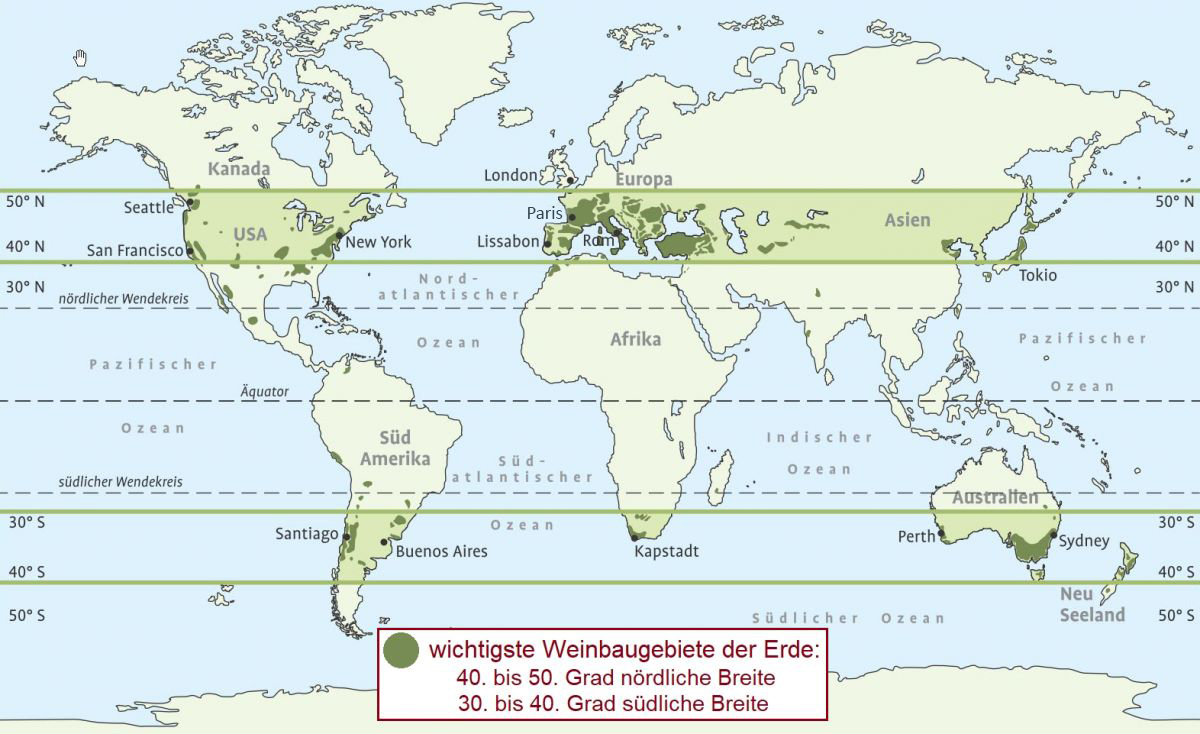Portuguese name for grape variety; see there.
Grape variety
The vine originated in Transcaucasia and, according to the latest research, possibly also in south-east Anatolia in Turkey near the biblical Mount Ararat. As with most useful plants, there are many varieties of grapevines, which are known as cultivars. The morphological description can be found under the heading vine. The science of describing varieties is called ampelography (grape variety science). The botanical taxonomy (hierarchical systematics) is described under vine systematics. Over thousands of years, thousands of new grape varieties have been created through spontaneous (natural) crossing and sowing, random mutations and, from the 19th century onwards, through targeted new breeding. They are the result of fertilised seeds that end up in the soil or deliberate sowing and are therefore the products of generative (sexual) propagation.

Grape varieties in antiquity
The Etruscans, Romans and Greeks, as well as the earlier advanced civilisations such as the Egyptians, Babylonians, Hittites and Phoenicians already practised targeted seedling selection (selection). It is not known whether they deliberately transferred pollen from one variety to another, i.e. whether they deliberately created crosses (new varieties). Around 150 Latin grape variety names have survived from the Romans. However, the Roman poet Virgil (70-19 BC) wrote about the grape varieties that they were " as countless as the grains of sand in the desert" (see also under ancient grape varieties).
The vines most suitable for cultivation due to their positive characteristics, such as high yield, resistance (resilience) to environmental influences such as frost and disease, early ripening and particularly good flavour of the grapes, were already selected by humans in ancient times and further vines were branched off through vegetative propagation. The Catholic monastic orders of the Benedictines, Carthusians and Cistercians made great contributions to the cultivation of grape varieties and the further development of viticulture, providing decisive impetus in many countries from the 6th century onwards.
Origin of the diversity of grape varieties
After the sowing of berry seeds, a new variety with specific phenotypic and genotypic characteristics is created. This is due to the heterozygous, i.e. split-breeding characteristic of the grapevine, which means the inability of offspring of the same variety (see under flowering). Without human intervention, the parents are left to chance. The mother variety is fertilised by the pollen of the father variety, whereby the earliest vines were generally unisexual (dioecious), i.e. there were purely female and purely male specimens. The father and mother were therefore different plants. Today's cultivated vines, however, are dioecious (monoecious) and can therefore also fertilise themselves.
New varieties can also arise through spontaneous mutation. The older a grape variety is, the more likely it is that many mutations have also had an effect on the morphology of the plants. Over the course of time, these can give rise to independent lines of development. In the case of conspicuous characteristics, such mutation-induced clones were often treated as independent varieties. For example, Pinot Blanc, Pinot Gris and Frühburgunder (Pinot Précoce), which are mutated clones of Pinot Noir (Blauburgunder) in terms of berry colour or ripening time. This is a loss of colour. From the middle of the 19th century, many new grape varieties (new varieties) were deliberately created through crossbreeding in order to combine the positive characteristics of several varieties in one plant.

Number of different grape varieties
The number of existing grape varieties is based on rough estimates. More than 18,000 grape varieties are registered in the VIVC catalogue of the Julius Kühn Institute, including breeding strains, hybrid varieties, wild species and historical varieties. However, these are likely to include many unrecognised synonyms (pseudonyms) or extinct varieties. Realistic estimates assume 8,000 to 10,000 varieties of the European species Vitis vinifera. The reason for the inaccuracy of the estimate is that an exact count is difficult, as numerous grape varieties are cultivated in different countries under different names (synonyms), and to date no one has succeeded in comparing the thousands of national varieties internationally.
There is particular uncertainty about the varieties from the Eastern Bloc, Turkey, Japan, India and China. However, varieties from Portugal, Spain, Italy, Malta and Greece have also been insufficiently described in some cases, so that only a direct comparison of the living plants could provide information. With the help of standardised genetic fingerprinting methods, the comparison of varieties can be carried out relatively easily at the desk. This is done by molecular genetic analyses and comparisons of the DNA, i.e. the genetic pattern. This has only been possible since the early 1990s; until then, grape varieties had to be determined solely on the basis of the morphological characteristics of the leaf, grape and other criteria such as ripening time.
The Domaine de Vassal research centre near Montpellier in Languedoc-Roussillon maintains the world's largest living vine assortment with several thousand specimens. This includes 2,300 European varieties of the European species Vitis vinifera, 800 interspecific crosses or hybrids, 230 rootstocks and 28 wild vine species. Today, around 2,500 quality wine grape varieties are authorised under the respective national laws, but many only play a local role. Only a few hundred are of actual global importance. The Frenchmen Pierre Galet (1921-2019), who described around 10,000 varieties in his many publications, and Paul Truel (1924-2014), who clarified the identity of many varieties, are regarded as important ampelographers of the modern era.
Leading varieties & parentage
Most European cultivars can be traced back to a relatively small group of leading varieties and their spontaneous crosses. The most important is probably Gouais Blanc (White Heunisch), from which over 100 varieties such as Riesling (Germany), Chardonnay (France), Blaufränkisch and Silvaner (Austria), as well as Furmint (Hungary) are descended. Traminer (Savagnin Blanc) with Chenin Blanc, Sauvignon Blanc and Roter Veltliner, as well as Pinot (often with Gouais Blanc) have also left many traces. Others with many descendants are Cabernet Franc, Cayetana Blanca, Chasselas, Rèze, Garganega, Hebén, Listán Prieto, Luglienga Bianca, Muscat Blanc, Nebbiolo, Teroldego and Tribidrag.
Wine grapes & table grapes
There is a relatively big difference between these two groups. Depending on the intended use, these varieties must have certain characteristics. The wine grapes are intended for wine production, the table grapes for consumption. In addition, there are special varieties, usually classified as table grapes, which are used for the production of sultanas, grape jam, wine jelly and grape juice. The berries of table grapes are generally larger, seedless and contain fewer acids but a lot of glucose. They have a longer shelf life than wine grapes, which are processed more quickly. Table grapes are also not subject to wine law.
However, there are also table grape varieties suitable for winemaking, such as Muscat d'Alexandrie, Muscat d'Hamburg and Regent. In the European Union, it is the responsibility of the individual countries to define the varieties for the respective use; this applies in particular to the quality wine grape varieties. In contrast to the wine grape varieties, where many of the most important ones are very old and originate from spontaneous (natural) cross-breeding, the majority of table grape varieties have been created through targeted new breeding with desired characteristics.
Vine belt = vine-growing regions
Vines are planted in around 120 of the world's 193 countries. The best climatic conditions are found in the vine bel ts (40 to 50 degrees north and 30 to 40 degrees south latitude) at 100 to 400 metres above sea level, although there are also vineyards outside these areas. In addition to rock, soil type, climate, location and vinification method, the grape variety has a decisive influence on the character and quality of a wine. Every country, wine-growing region, wine-growing area and often the smallest sub-areas have their own typical grape varieties, which also characterise the typical properties of the resulting wine. Due to the worldwide spread of phylloxera introduced from America, European grape varieties have to be grafted almost everywhere in order to prevent phylloxera damage to the roots.

The 150 most common grape varieties
In 2022, the total area under vines worldwide was 7,254,512 hectares, which at around 73,000 km² is relatively close to the size of Austria (84,000 km²). This refers to all uses such as wine, grape juice, table grapes and sultanas, including young vines that are not yet in production. A total of around 80 million tonnes of grapes were harvested worldwide. Around 47% were wine grapes (table grapes 45%, sultanas 8%), of which 258 million hectolitres of wine were produced. This corresponds to 34.4 billion 0.75-litre bottles.
A comparison of the years 2000 and 2016 shows the major changes in volume for many varieties over these 16 years....
Voices of our members

For my many years of work as an editor with a wine and culinary focus, I always like to inform myself about special questions at Wine lexicon. Spontaneous reading and following links often leads to exciting discoveries in the wide world of wine.
Dr. Christa Hanten
Fachjournalistin, Lektorin und Verkosterin, Wien